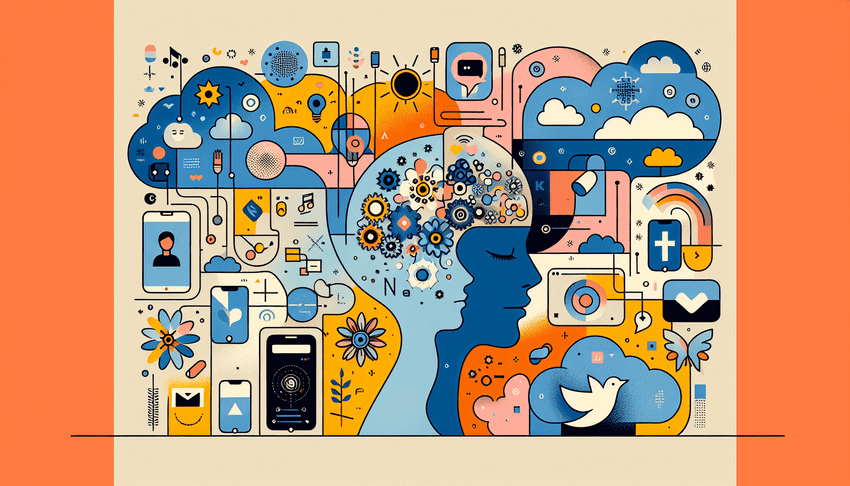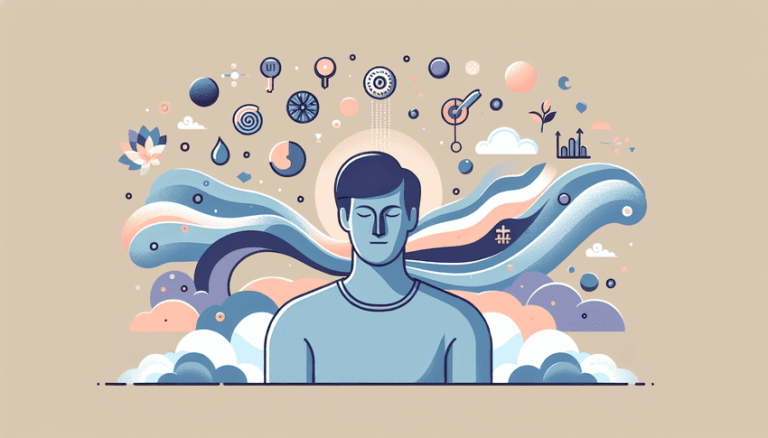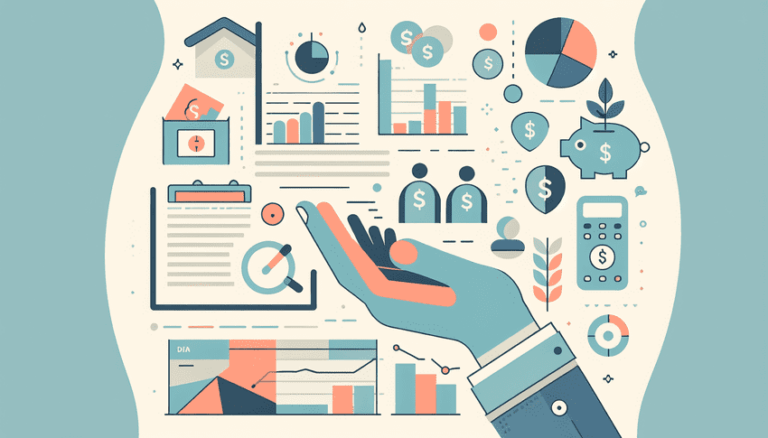Table of Contents
The Interplay Between Technology and Emotional Regulation

Social Media and Emotional Comparison
Exploring the Nexus of Technology and Happiness: The Double-Edged Sword of Social Media
In today’s digitized world, the intricate relationship between Technology and Happiness is more prominent than ever. As we navigate the intricacies of social media, a behemoth in the technological landscape, its impact on our emotional wellbeing comes under the spotlight. Social media platforms are not just a tool for connection; they are a mirror reflecting the multifaceted dimensions of social comparison, with profound effects on our self-esteem and overall joy in life.
The Psychological Underpinnings of Social Comparison
At its core, social comparison theory posits that individuals determine their own social and personal worth based on how they stack up against others. This is a natural, often subconscious, process that can be magnified by social media usage. With endless streams of curated content showcasing the highlights of people’s lives, users are prone to benchmark their own lives against an often unrealistic standard. This dynamic can lead to a distorted perception of one’s own achievements, and a subsequent dip in happiness and contentment.
- The Highlight Reel Effect: Social Media’s Skewed Reality
- Self-Esteem in the Age of Digital Comparison
Real-World Impacts: Influencers and the Youth
The potent effect of influencers on young adults exemplifies this phenomenon. Aiming to maintain a certain image online, influencers often portray a life of luxury and perfection. This portrayal can induce feelings of inadequacy and envy among followers, especially impressionable young adults who are forging their identities. For instance, exposure to ‘flawless’ travel and lifestyle photos may trigger a sense of lacking in one’s own life, despite the often-unspoken realities behind those images.
- Understanding the Influencer Paradigm
- The Psychological Cost of Constant Comparison
Forging a Path to Healthier Social Media Usage
Amidst the daunting challenges posed by social media and emotional comparison, developing strategies for healthier use is paramount. Implementing ‘digital detoxes’, setting realistic expectations, and curating a feed that inspires rather than depresses, are all steps that can empower users towards a more positive experience. Highlighting the importance of context and the selective nature of social media can help restore balance and nurture a healthier self-view.
- Strategies for Mindful Social Media Engagement
- Nurturing Self-Esteem in a Digital World
As we delved into the interplay between Technology and Happiness, it’s evident that social media can be a double-edged sword. While fostering connection and inspiration, it can also amplify negative emotions through relentless social comparison. By understanding the underlying psychological theories and their manifestations in real life, individuals can better navigate the digital terrain. In doing so, they can embrace social media as a tool for positive growth, rather than a yardstick for self-worth.
Screen Time and Mental Health
In the Digital Age, where screens have become an extension of our hands and eyes, we’re beginning to understand the profound impact technology has on our mental health. The term ‘Digital Well-being’ is gaining momentum as we navigate the murky waters of balancing connectivity with personal happiness. The tie between technology and happiness swings like a pendulum—from beneficial to detrimental—leaving us to ponder the Tech Influence on Mental Health.
Modern Technology Effects on our psychological landscape are significant and multifaceted. Research has consistently linked excessive screen time with stress, anxiety, and depression. But what does ‘excessive’ mean in a world where screens mediate our work, social interaction, and access to information? A study published in the Journal of Abnormal Psychology pointed out that young adults who spend more than 7 hours a day on screens are more likely to have symptoms of depression and anxiety.
Yet, practical measures to manage our digital life can turn the tables on the negative impacts. For instance, the concept of ‘digital detox’—periodically disengaging from electronic devices—shows promise in alleviating stress and promoting mindfulness.
- Setting screen time limits, especially before bed, can improve sleep quality and overall mood.
- Adopting ‘no-phone zones,’ such as during meals or family time, can enhance interpersonal connections.
- Using apps that track and remind us of our digital consumption encourages a more mindful use of technology and aids in preventing the autopilot scrolling that can lead to increased anxiety and stress.
Strategies for Managing Screen Time
Focusing on the strategies to manage screen time effectively, it is crucial to create a personalized digital diet that suits individual needs while fostering digital age happiness. This involves being intentional about what we consume digitally. Just as a balanced nutritional diet is essential for physical health, a healthy digital diet is paramount for mental health. Techniques such as scheduling specific times for email, social media, and entertainment can create a more structured and less overwhelming digital routine.
Embracing hobbies that don’t involve screens, like reading physical books, outdoor sports, or arts and crafts, also provides a necessary screen break, recalibrating our attention and reducing the risk of technology burnout. Professionals encourage the practice of mindful scrolling—consuming digital content with purpose and intent rather than as a reflexive habit. By doing so, we are not only reducing our screen time but also enhancing the quality of it, leading to a more satisfying and controlled engagement with technology.
The conversation on technology and mental health is evolving, and while we acknowledge the challenges, we must also harness the tools for positive change. Digital Well-being is more than a concept; it’s a lifeline in the sea of digital consumption, a reminder that our online habits can and should align with our pursuit of a happy, healthy life. So let’s take control of the screen time narrative for the sake of our Mental Health, ensuring that our life stories are not written in the light of a screen but in the richness of lived experiences.
Technological Advancements and Mindfulness Practices

Technological Advancements and Mindfulness Practices
Technology and Happiness: Bridging the Gap with Mindfulness Apps
In the fast-paced rhythm of modern life, Technology and Happiness might seem like parallel tracks, never destined to converge. Yet, the harmony between the two is not as elusive as it might appear. A key element in this synergy is the rise of mobile applications designed to foster mindfulness and meditation. These digital tools have become ambassadors of tranquility, helping users navigate the stormy seas of stress and anxiety.
The Impact of Mindfulness Apps
Mindfulness training, when facilitated through smartphone applications, has democratised the practice of meditation. For those grappling with the pressures of daily life, these apps offer a pocket-sized sanctuary. Notable examples such as Headspace and Calm have gained acclaim for their user-friendly interfaces and personalized meditation experiences. The simplicity of receiving guided sessions with the mere tap of a screen has allowed individuals to integrate mindfulness into their routines seamlessly.
Empirical Evidence of Efficacy
The effectiveness of these applications goes beyond anecdotal reports. Empirical studies have shown that regular use of mindfulness apps can yield remarkable outcomes in mental well-being. For instance, research published in the journal ‘Psychiatry Research’ reported that participants using a mindfulness app demonstrated reduced psychological stress and improved mood compared to control groups. This substantiates the apps’ role in enhancing overall Happiness.
- Guided Meditation: Apps often offer a variety of guided meditations, catering to different needs—be it calming anxiety or promoting sleep.
- Daily Practices: Many apps propose daily challenges or routines, encouraging consistency and the development of a regular mindfulness practice.
- Tracking Progress: Users can track their progress, which helps in recognizing patterns and understanding their emotional landscape.
Such features augment the user’s journey towards peace of mind and emotional stability. They offer a semblance of control amid chaos, which is a cornerstone of Emotional Intelligence.
Conclusion
The intersection of Technology and Happiness, particularly through the medium of mindfulness apps, exemplifies how technology can serve human well-being. In an era where screen time is often associated with stress, these applications are redefining the dialogue. They are the digital age’s answer to an ancient practice, proving that with the right tools, technology can indeed contribute to a happier and more contented society. By embracing these innovations, individuals can embark on a transformative journey that aligns with the principles of Positive Psychology, ensuring that technology becomes an ally in the quest for a fulfilled life.
Virtual Reality and Experiential Wellness
In our fast-evolving digital landscape, Technology and Happiness intertwine in unprecedented ways, offering innovative outlets for mental wellness. Among them, Virtual Reality (VR) stands out as a formidable tool in the pursuit of experiential wellness.
The Immersive Escape: Virtual Reality as a Therapeutic Tool
Virtual Reality technology has skipped ahead, trading its reputation as a gaming accessory for that of a sophisticated instrument in mental health therapy. By creating a simulated yet convincing environment, VR enables individuals to immerse themselves in scenarios tailored to promote relaxation, healing, and even the treatment of certain psychological disorders. The scientific community has observed and verified VR’s benefits, showing that it can effectively reduce symptoms of anxiety, post-traumatic stress disorder, and phobias.
- Guided Meditation: VR programs allow users to engage in meditation practices within serene, digitally-created landscapes, which can heighten the sense of peace and presence often more difficult to achieve in less controlled real-world settings.
- Exposure Therapy: Often utilized within cognitive-behavioral therapy, VR helps patients confront and overcome their fears in a safe and controlled environment, thereby gradually reducing their anxiety responses over time.
- Stress Reduction: By escaping into calming VR settings, individuals can distance themselves from the stressors of everyday life, achieving a level of relaxation that might otherwise elude them.
Recreational Relaxation: The Rise of VR Wellness Programs
Well beyond therapeutic settings, VR technologies are enhancing personal happiness through recreational wellness programs. Users can transport themselves to virtual environments where the only limits are those of the imagination. One can scale Everest, meditate by a remote waterfall, or embark on peaceful journeys across galaxies—all from the comfort of their living room.
- Virtual Fitness: Companies have emerged with VR-based fitness programs that couple the joy of gaming with physical exercise, leading to more consistent workout routines due to their engaging nature.
- Immersive Learning: Education in VR can provide deeply engaging and enjoyable experiences that not only entertain but also inspire a passion for learning.
- Connectivity: Technology and Happiness also converge in VR’s ability to connect people. Social VR platforms allow users to meet, share experiences, and create memories, even when miles apart.
Research underpinning these applications continues to reinforce the promising connection between Technology and Happiness. For instance, studies have found that immersion in VR can significantly increase positive emotions and decrease stress levels. This correlation is compelling as it underscores VR’s potential in crafting experiences that do more than merely distract—they enhance our overall sense of well-being.
The future of VR in experiential wellness is undeniably bright, with endless possibilities for growth and innovation. By leveraging the escapism that VR provides, we pave a new path towards happiness, one digital experience at a time. Whether applied as a healing modality or as a gateway to extraordinary experiences, VR has proven to be more than a technological marvel; it’s a vessel for our ongoing endeavor to realize a happier and healthier lifestyle.
Summary
In our interconnected world, the entwining of Technology and Happiness ignites a crucial conversation, particularly when examining social media’s role in shaping our emotions. This relationship is a double-edged sword, providing a platform for connection while simultaneously presenting challenges to our emotional well-being.
The Psychological Underpinnings of Social Comparison
Social media showcases a curated reality, often leading users to measure their lives against others’. The highlight reel effect—a feed full of life’s shining moments—can distort perceptions of achievement, detracting from self-esteem and joy.
Real-World Impacts: Influencers and the Youth
Influencers project an image of perfection, which can spawn feelings of inadequacy among their followers, especially young adults. These depictions rarely tell the whole story, yet they exert a powerful influence on self-perception and happiness.
Forging a Path to Healthier Social Media Usage
To alleviate the pressures of social media, strategies such as digital detoxes, setting realistic expectations, and nurturing self-esteem are vital. By curating content that inspires, users can foster a more positive online experience.
- Strategies for Mindful Social Media Engagement
- Nurturing Self-Esteem in a Digital World
Embracing technology wisely can lead to shared experiences and emotional growth, highlighting the benefits while navigating the pitfalls of the digital age.
As we delve into facets of Technology and Happiness, the onus is on us to facilitate positivity within digital communication realms. Recognizing the emotive limitations of texting and instant messaging, advancements in emotion recognition software and affective computing aim to bridge the digital empathy gap.
Technology and Empathy Enhancement
Encouraging intentional empathetic communication, promoting empathy training, and embedding emotional cues in digital platforms can deepen connections, allowing us to forge a more emotionally intelligent path forward.
- Conscious communication to express empathy
- Empathy training in remote working environments
- Empathetic design in digital communication platforms
Mindfulness apps marry Technology and Happiness, delivering mental tranquility. With platforms like Headspace and Calm, users have access to personalized meditation experiences. This integration into daily life underscores the positive potential of technology.
The Impact of Mindfulness Apps
Scientific research confirms mindfulness apps’ role in reducing stress and enhancing mood, showcasing the efficacy of technology in cultivating personal well-being.
- Guided meditations for various needs
- Daily routines to foster consistent mindfulness practice
- Progress tracking to better understand emotional patterns
These innovations illustrate that technology can be a force for happiness, helping individuals to navigate life’s challenges.
Venturing further, Virtual Reality (VR) emerges as a dynamic avenue for experiential wellness, extending its capabilities beyond entertainment.
The Immersive Escape: Virtual Reality as a Therapeutic Tool
VR’s application in mental health therapy demonstrates its capacity to alleviate anxiety, PTSD, and phobias through immersive therapeutic scenarios. Recreational VR wellness programs also contribute to personal happiness, enabling users to undertake mesmerizing journeys and activities.
- Guided meditation within peaceful digital environments
- Exposure therapy for safely overcoming fears
- Stress reduction through escapist VR experiences
These applications not only distract but also enhance life quality, symbolizing VR’s contribution to a happier, healthier existence.
By observing the intricate dance between Technology and Happiness, we can leverage digital tools for our mental and emotional advantage. From social media to VR, the digital landscape offers both challenges and opportunities for growth. With informed use and innovative approaches, technology can indeed become a steadfast ally in our pursuit of happiness.
FAQ – The Impact of Technology on Happiness
How does the pervasive use of social media platforms impact the self-esteem and happiness of adolescents in modern society?
The pervasive use of social media platforms can lead to a complex landscape for adolescent self-esteem and happiness, where the curated images and lifestyles often presented may result in unfair comparisons and feelings of inadequacy, potentially diminishing self-esteem. However, when used mindfully, these platforms can also provide avenues for self-expression, connection, and support within peer communities, which can positively contribute to an adolescent’s sense of happiness and belonging. It’s crucial for young users to build self-awareness and critical thinking skills to navigate social media healthily, amidst its potential to sculpt a dual narrative of pressure and opportunity in their formative years.
How does the constant connectivity afforded by smartphones and social media platforms affect our day-to-day stress levels and sense of personal satisfaction?
The pervasive connectivity enabled by smartphones and social media can often amplify our daily stress levels as we face a barrage of notifications, social comparisons, and the pressure to be constantly available. However, these platforms also offer unparalleled opportunities for maintaining social bonds and accessing supportive networks, which can contribute to personal satisfaction if balanced mindfully. Achieving this equilibrium between connectedness and personal well-being hinges upon our ability to set boundaries and cultivate digital mindfulness, integrating the convenience of technology without compromising our mental peace.
How does the use of social media platforms correlate with changes in an individual’s happiness and mental well-being, according to recent studies?
Recent studies indicate that excessive use of social media platforms can negatively correlate with an individual’s happiness and mental well-being, contributing to feelings of inadequacy, anxiety, and depression. However, when used moderately and with intention, these platforms can enhance connections with others and provide support networks, which may have a positive impact. It’s important to note that the relationship between social media use and happiness is complex and can be influenced by various factors such as the individual’s personality, the manner of use, and the type of content they engage with.




